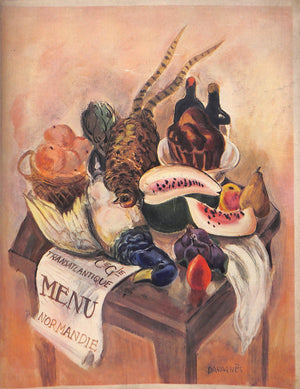"S.S. 'Normandie' Set x 10 c1935 Transatlantique Menus"
$500
Editions Atlanitque
1935
w/ 10 menus in folio
11 1/2" x 9"
Scroll Down for (21) Additional Scans:
The SS Normandie was a French ocean liner built in Saint-Nazaire, France, for the French Line Compagnie Générale Transatlantique (CGT). She entered service in 1935 as the largest and fastest passenger ship afloat, crossing the Atlantic in a record 4.14 days, and remains the most powerful steam turbo-electric-propelled passenger ship ever built.
Normandie's novel design and lavish interiors led many to consider her the greatest of ocean liners. Despite this, she was not a commercial success and relied partly on government subsidy to operate. During service as the flagship of the CGT, she made 139 westbound transatlantic crossings from her home port of Le Havre to New York City. Normandie held the Blue Riband for the fastest transatlantic crossing at several points during her service career, during which the RMS Queen Mary was her main rival.











































